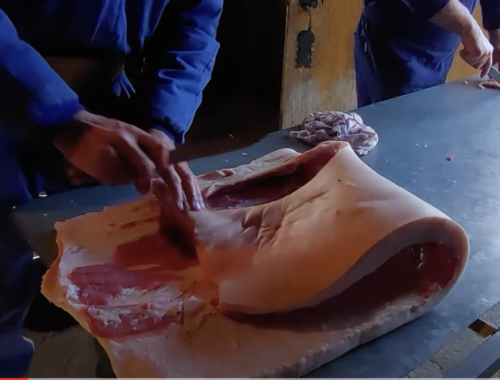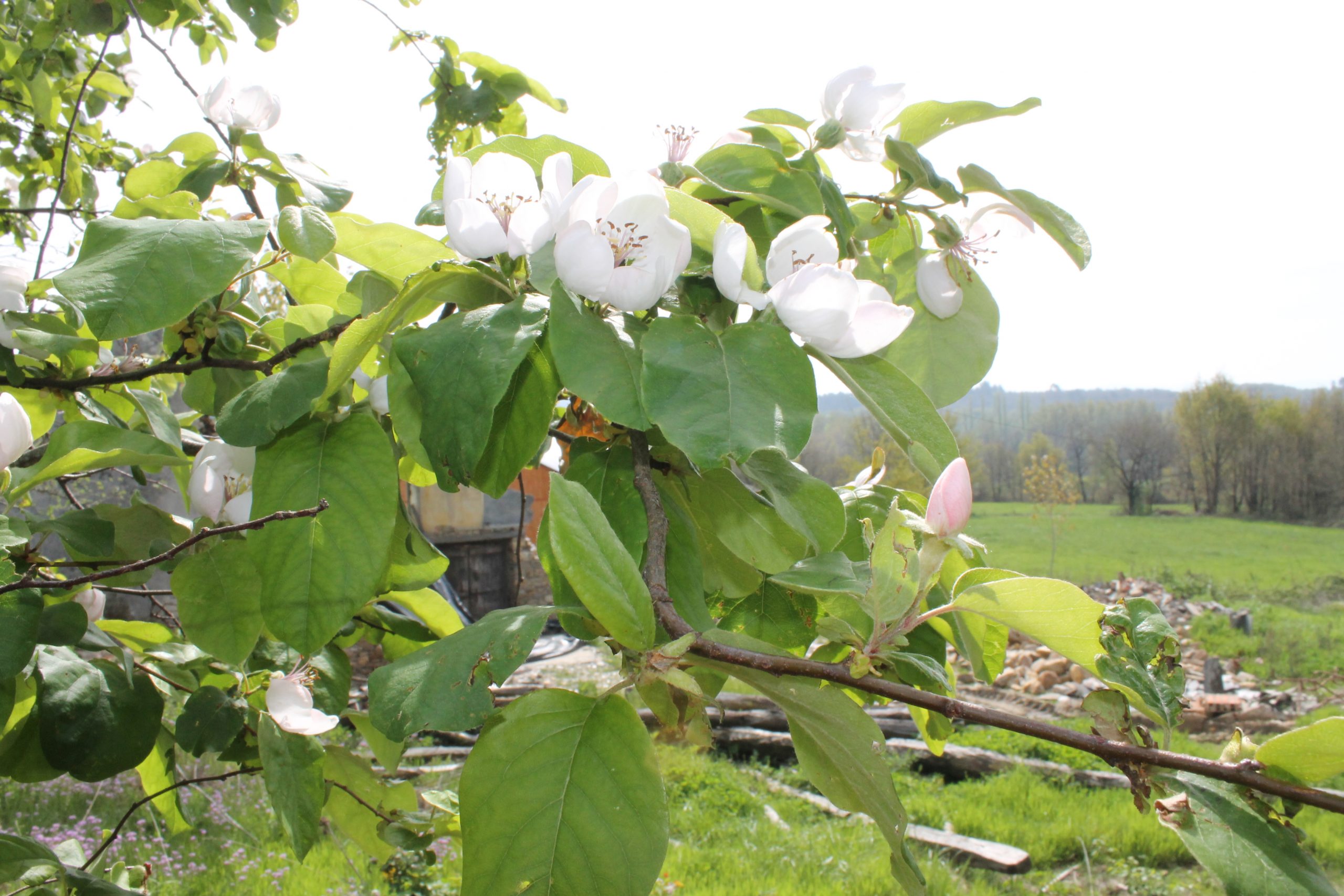
Making Apple Cider Vinegar
I was given a bag of apples the other day; completely organic but I’m an apple snob. I love a crisp sharp Braeburn, but most red apples are just a bit too mealy. I’m not a fan of apple sauce and I tried drying apples last year and what a waste of effort that was! But we do use apple cider vinegar, mostly in salad dressings and as a post shower rinse, because the home-made shampoo we use is alkaline and needs to be neutralised.
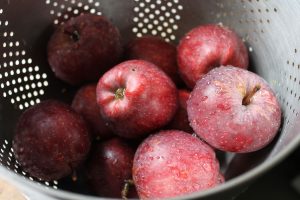
I mostly avoid vinegar. This could be because my body seems to go over the top with histamine and vinegar is very high in histamine, but I am attracted to apple cider vinegar. It has a long history of health benefits, going back to Hippocrates, and recent studies have confirmed this, although they are not so easy to find on the internet these days. My gut feeling (literally) is that it helps balance bacteria in the gut and this helps the immune system and well-being in general.
BTW: Bragg’s ACV was bought out a few years ago and the new formula is not the same. Best to make your own.
It is very simple to make apple cider vinegar.
1: Wash 10 or so whole apples, cut them into chunks and leave them to brown for an hour or so.
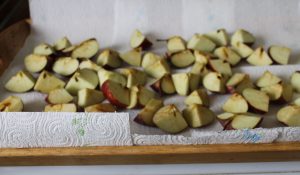
2: Fill a large glass jar with the apple chunks, including seeds and stems, to about halfway or just over.
3: Spoon honey over the apple pieces. I put 4 dessert spoons in the large jar and two in the small one.
4: Top up with water with water until it’s at least three-quarters or entirely full and stir in the honey.
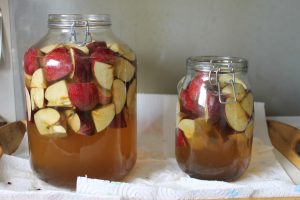
5. Cover the top with a cloth held in place with a rubber band and put it in a warm-ish dark room. (I put the jars in the utility room).
6. Over the next week I’ll need to give the mixture a stir every day. Once the fermentation starts, the mixture will foam and bubble and smell of rotten apples!
7: After a week or so the apples will have have settled to the bottom of the jar. This means it’s time to strain the liquid and discard the apples into the compost bin.
8: Cover this liquid with a cloth and again, store in a warm, dark location. This time, it will be stored for four to six weeks, in which time the mother will form on the surface.
9: Keep sealed and out of sunlight. After about another two weeks, it should lose its alcohol content, become more acidic and develop the traditional apple cider vinegar taste.
10. This bottle then becomes ‘the mother’ and can be used as is, or diluted with water to taste.
Wasp Medicine
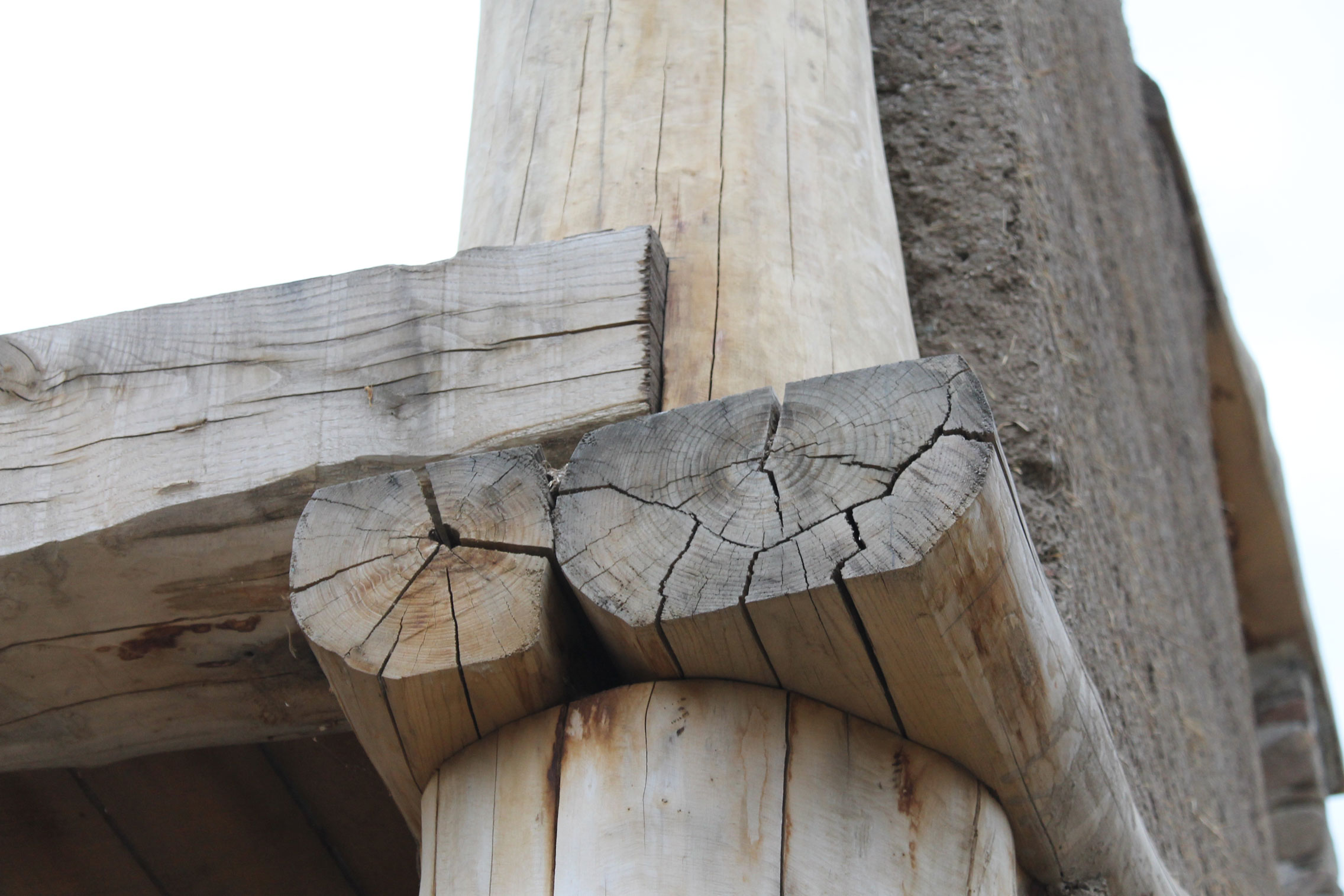
Chestnut pillars
You May Also Like
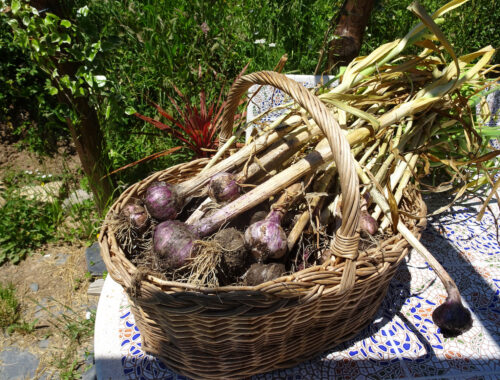
Garlic: friend or foe?
May 31, 2022
Rosehip syrup
October 24, 2013